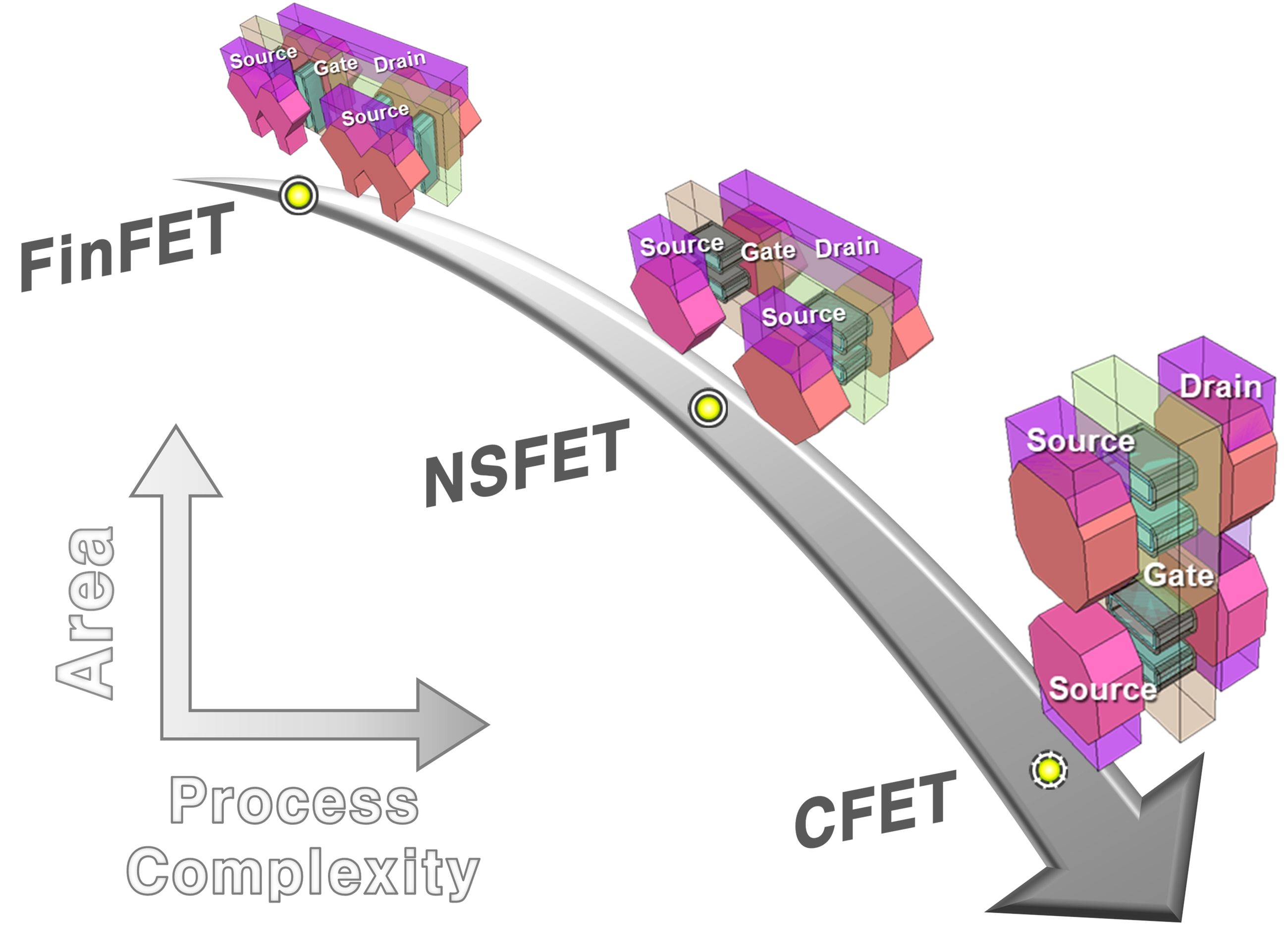For decades, shrinking transistors have driven explosive increases in computing power, but those days are coming to an end. The question is: where do we go now? The 3D design is a major part of the answer.
How Have Computers Continued to Get Faster?
Computer processors are all made up of transistors—they’re what enable computers to perform “logical operations,” which means to compare and manipulate numbers. If you combine enough of them, you eventually get where we are today: computers that can record audio, take and process photos, do math, render video games, and even talk to us.
Generally speaking, the more transistors you have, the “smarter” and more capable your computer will be.
When transistors were first invented (around 1950), a single transistor was about 2 centimeters (nearly 1 inch) across and looked more like a prop from a sci-fi horror movie than a functional piece of technology. Today, things are different. Modern transistors are generally less than 60 nanometers (a nanometer is one billionth of a meter) across, which is a size reduction roughly equivalent to shrinking the moon down to the size of a lemon. Transistors have been shrinking reliably since they were first invented, such that the number of transistors we can cram into a given area doubles roughly every 18–24 months, a phenomenon commonly called Moore’s Law.
We can now pack billions of transistors into a microprocessor the size of a coin, and that has enabled computers to change from enormous machines that occupied entire buildings into devices small enough to be carried around in your pocket. But there’s a problem: transistors are getting too small.
Why Can’t Transistors Keep Getting Smaller?
As transistors get smaller, they become increasingly difficult to manufacture reliably. Even the best methods available result in waste, though that isn’t always a terrible thing. For example, if you’re trying to manufacture a 16-core CPU and only half of the cores wind up working, you can just disable the defective cores and sell it as an 8-core CPU—no harm done.
However, sometimes the defects impact something critical, and the entire thing has to be thrown out. As transistors have gotten smaller, this problem has gotten more severe.
Beyond just manufacturing concerns, a peculiar effect from quantum mechanics—quantum tunneling—becomes problematically common when you’re talking about nanoscale circuits. Quantum tunneling results in electrons sometimes going places they normally wouldn’t be able to, and that makes it difficult to create processors that function reliably.
Chips can get wider to accommodate more transistors, but that seriously aggravates the manufacturing challenge, and makes designing the microchips all the more complicated.
The combination of increased manufacturing difficulty and the fundamental limits of physics have nearly taken us to the end of Moore’s law, but with the ever-present demand for better, smarter, and faster computers, where do we go?
3D Transistors Are Coming to Save Moore’s Law
Transistors on a chip are a bit like an island city of single-story buildings. You can only make the buildings so small before they’re unusable, and since you’re on an island, you can’t sprawl outwards forever. Just like island cities, modern transistors are being designed to take advantage of vertical space. Instead of attaching them in a flat plane, they can be arranged vertically together to allow for “stuff” to be arranged into the same footprint.
CFET is one 3D design that we’re likely to see by the early 2030s or so.
However clever we may be with the designs of transistors going forward, there is no avoiding the fact that the end of Moore’s Law is approaching sooner than anyone would like. 3D transistors are one way we have to temporarily skirt the problem, but they’re only part of the picture. There is a greater emphasis on designing processors that excel at specific tasks—like neural processing units (NPUs) with AI applications—to maximize performance. There is also the possibility that new materials will have better properties that allow next-generation transistors to shrink even further, or that a breakthrough in quantum computing will make them more useful for everyday applications, but there are no guarantees. Those are options that may ultimately be limited by the laws of physics.





